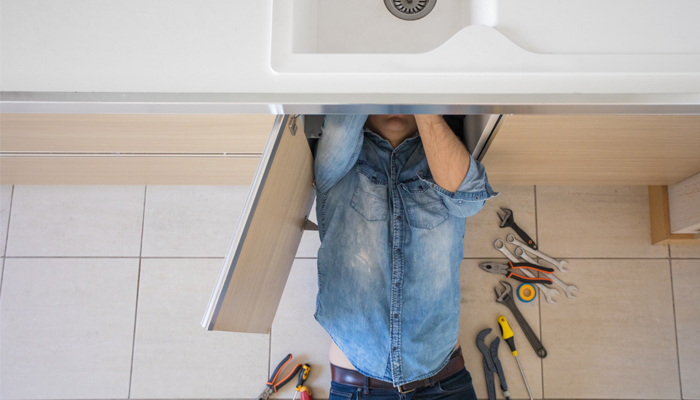As every landlord knows, it’s vital to keep up with repairs on your rental properties. The government has put legislation in place to ensure tenants’ homes are kept safe and in a good state of repair. The laws are there to protect both landlords and tenants.
Landlords are required to keep their rental properties in a generally good condition; to carry out prompt repairs and keep on top of regular maintenance. Gas and electrical systems are also covered by legislation and must meet specified standards – including regular safety inspections.
 © Kaspars Grinvalds / Shutterstock.com
© Kaspars Grinvalds / Shutterstock.com
There are also rules in place covering what happens if the landlord has to visit a property. While many aspects of a rented property’s safety are the landlord’s responsibility, some aspects are down to the tenants.
What is the landlord responsible for?
The landlord is normally responsible for structural repairs of the property, the heating and hot water systems and sanitary fittings such as wash basins, baths and sinks. When the landlord attempts a repair and causes further damage, they must repair this too, or arrange and pay for a professional to sort the problem.
When a landlord owns a block of flats, they are normally responsible for repairs to common areas, such as staircases. If the work isn’t completed, the local council can ask them to fix any problems in common areas.
The landlord must also repair a tenant’s flat if it has been damaged by another tenant.
When can a landlord enter the rented property?
A landlord has a legal right to enter their rental property to carry out an inspection or repairs. Tenants should be given at least 24 hours’ notice, although in the event of an emergency, immediate access may be possible.
During the repairs, tenants have the right to stay in their home. However, the landlord can ask them to move out if major repairs are necessary – this must be agreed in writing beforehand. The landlord must state how long the works will last, details of alternative accommodation and confirmation of the tenants’ right to return.
You can’t repossess a property to carry out repairs. However, you can apply to the courts if you wish to redevelop the property, or carry out substantial repairs, for an order to tell the tenants to leave. The court does not have to agree to this, but is more likely to do so if the landlord offers alternative accommodation.
If the repairs disrupt the tenants’ lives significantly, they may be entitled to claim a reduction in their rent – called a “rent abatement”- this will depend on whether a large amount of the property is uninhabitable during the works.
Once the renovations or repairs are completed, the landlord may be permitted to increase the rent, dependent on the wording of the tenancy agreement.
What are the consequences of a landlord breaking the law?
If a landlord fails to keep up with safety standards and doesn’t ensure the property is in a good condition, there could be financial penalties. If repairs are not done properly or if a landlord refuses to carry out maintenance, the tenant can make a claim in the small claims court if the works cost less than £5,000. In some circumstances, the tenants can carry out the repairs themselves and deduct the costs from their rent.
If the landlord doesn’t keep the property in good condition, the tenants can ask the council to inspect it. Under the Housing Health and Safety Rating System, the council can order the landlord to take any necessary action. They can also take enforcement action if any serious hazards are found to ensure the landlord rectifies the problems.
What about damage in furnished properties?
If damage occurs to the furniture in furnished properties, other than average wear and tear, it is usually assumed to be the tenant’s responsibility. If the tenant doesn’t have insurance cover, they must pay to rectify the damage themselves.
It is important to identify the cause of any damage, as this enables the landlord to establish who is responsible and which insurer should be claimed from. The tenants are usually in charge of making sure the furniture and other contents don’t suffer any accidental or deliberate damage through negligence.
It is the landlord’s responsibility to repair or replace furniture that has simply deteriorated over a period of time due to general wear and tear.
